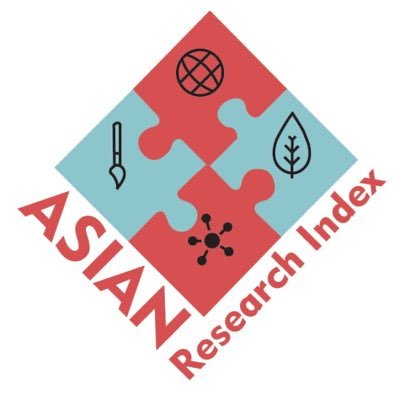Knowledge, Attitudes and Beliefs about Chronic Low Back Pain among Final Year Physical Therapy Students in Universities of Islamabad
DOI:
https://doi.org/10.55735/w81wmz29Keywords:
Attitude, Beliefs, Chronic low back pain, KnowledgeAbstract
Background: Low back pain is the leading cause of disability worldwide and is associated with a significant reduction in quality of life. Reports have shown that the global burden due to low back pain has increased by 54%, primarily due to aging and population growth. Objective: To assess the knowledge, attitudes, and beliefs about chronic low back pain among final year physical therapy students. Methodology: The cross-sectional study was conducted from March to July 2023 in universities of Islamabad including final year physical therapy students. After approval from the ethical review committee of university IIUI-FAHS/DPT/1020-1307. The sample was calculated using non-probability convenience sampling techniques from final year physiotherapy students of private sector , both genders participated in the study. The Health Care Providers' Pain and Impairment Relationship Scale was used to quantify beliefs and attitude of healthcare providers towards chronic low back pain patients while the Neurophysiology of Pain Questionnaire measures how an individual understands the mechanism that pain. Cross-tabulation and independent t-test were used for comparison. Pearson correlation coefficient test was used to find out the relationship between HCPAIRS and NPQ. Results: Out of 277 participants, 67 (24.2%) were male and 210 (75.8%) were female with mean age 23.38±0.6. There was a weak positive correlation between NPQ and HCPAIRS (r=0.227, p=.0001) which showed the students with higher pain neurophysiology knowledge held stronger beliefs that pain justifies activity limitation and impairment. Conclusion: The study concluded that final-year physical therapy students have a good understanding of pain neurophysiology. HC-PAIRS higher score indicates a moderately strong belief of students that pain is closely linked to disability and limitation. Additionally, a weak positive significant association was found between NPQ and HC-PAIRS.
Downloads
References
1. Hartvigsen J, Hancock MJ, Kongsted A, et al. What low back pain is and why we need to pay attention. The Lancet 2018; 391(10137): 2356-67. DOI: https://doi.org/10.1016/S0140-6736(18)30480-X
2. Ferreira ML, De Luca K, Haile LM, et al. Global, regional, and national burden of low back pain, 1990–2020, its attributable risk factors, and projections to 2050: a systematic analysis of the Global Burden of Disease Study 2021. The Lancet Rheumatology 2023; 5(6): e316-e29. DOI: https://doi.org/10.2139/ssrn.4318392
3. Li W, Gong Y, Liu J, et al. Peripheral and central pathological mechanisms of chronic low back pain: a narrative review. Journal of Pain Research 2021: 1483-94. DOI: https://doi.org/10.2147/JPR.S306280
4. Boota M, Shoukat F, Khalil O, Naeem AAJTHJoP, Sciences R. Comparative Effects of Pulsed Electromagnetic Field Therapy and Radio Frequency on Pain and Functional Disability in Patients with Chronic Low Back Pain: Pulsed Electromagnetic Field Therapy & Radiofrequency in LBP. 2023; 3(8): 748-55. DOI: https://doi.org/10.55735/hjprs.v3i8.173
5. Barrey CY, Le Huec J-C. Chronic low back pain: Relevance of a new classification based on the injury pattern. Orthopaedics & Traumatology: Surgery & Research 2019; 105(2): 339-46. DOI: https://doi.org/10.1016/j.otsr.2018.11.021
6. Amjad F, Awais MJThJoP, Sciences R. Risk factors associated with low back pain among pregnant women in Pakistan. The Healer Journal of Physiotherapy and Rehabilitation Sciences. 2021; 1(2): 49-57. DOI: https://doi.org/10.55735/thjprs.v1i2.25
7. Zhao X, Xu M, Jorgenson K, Kong J. Neurochemical changes in patients with chronic low back pain detected by proton magnetic resonance spectroscopy: a systematic review. NeuroImage: Clinical 2017; 13: 33-8. DOI: https://doi.org/10.1016/j.nicl.2016.11.006
8. Savigny P, Watson P, Underwood M. Early management of persistent non-specific low back pain: summary of NICE guidance. Biomedical Journal 2009; 338. DOI: https://doi.org/10.1136/bmj.b1805
9. Cho KH, Beom JW, Lee TS, Lim JH, Lee TH, Yuk JH. Trunk muscles strength as a risk factor for nonspecific low back pain: a pilot study. Annals of Rehabilitation Medicine 2014; 38(2): 234-40. DOI: https://doi.org/10.5535/arm.2014.38.2.234
10. Daykin AR, Richardson B. Physiotherapists’ pain beliefs and their influence on the management of patients with chronic low back pain. Spine 2004; 29(7): 783-95. DOI: https://doi.org/10.1097/01.BRS.0000115135.19082.97
11. Foster NE, Delitto A. Embedding psychosocial perspectives within clinical management of low back pain: integration of psychosocially informed management principles into physical therapist practice—challenges and opportunities. Physical Therapy 2011; 91(5): 790-803. DOI: https://doi.org/10.2522/ptj.20100326
12. Rauf M, Fatima UE, Dastgir H, Bukhtiar M, Farooqi A, Faizan M. The Healer Journal of Physiotherapy and Rehabilitation Sciences. 2025; 5(2): 33-37. DOI: https://doi.org/10.55735/hjprs.v5i2.349
13. Dwyer CP, McKenna-Plumley P, Durand H, et al. Factors influencing the application of a biopsychosocial perspective in clinical judgement of chronic pain: Interactive management with medical students. Pain Physician 2017; 20(6): E951-E60. DOI: https://doi.org/10.36076/ppj.20.5.E951
14. Domenech J, Sánchez-Zuriaga D, Segura-Ortí E, Espejo-Tort B, Lisón J. Impact of biomedical and biopsychosocial training sessions on the attitudes, beliefs, and recommendations of health care providers about low back pain: a randomised clinical trial. Pain 2011; 152(11): 2557-63. DOI: https://doi.org/10.1016/j.pain.2011.07.023
15. Mukoka G, Olivier B, Ravat S. Level of knowledge, attitudes and beliefs towards patients with chronic low back pain among final School of Therapeutic Sciences students at the University of the Witwatersrand–a cross-sectional study. South African Journal of Physiotherapy 2019; 75(1): 1-6. DOI: https://doi.org/10.4102/sajp.v75i1.683
16. Martin-Carbonell M, Sequeira-Daza D, Checa I, Domenech J, Espejo B, Castro-Melo G. Evaluation of the psychometric properties of the health care providers’ pain and impairment relationship scale (HC-PAIRS) in health professionals and university students from Chile and Colombia. Heliyon 2024; 10(14). DOI: https://doi.org/10.1016/j.heliyon.2024.e34652
17. Lotia KU, Sheth MS. Knowledge, Attitudes and Beliefs about Patients with Chronic Low Back Pain among Physiotherapy Students.
18. Fitzgerald K, Devonshire E, Vaughan B. Pain knowledge, attitudes and beliefs of allied health learners across three curricular models. Health Professions Education 2020; 6(4): 552-63. DOI: https://doi.org/10.1016/j.hpe.2020.09.001
19. Springer S, Gleicher H, Hababou H. Attitudes and beliefs about musculoskeletal pain and its association with pain neuroscience knowledge among physiotherapy students in Israel. Israel Journal of Health Policy Research 2018; 7: 1-8. DOI: https://doi.org/10.1186/s13584-018-0266-4
20. Christe G, Darlow B, Pichonnaz C. Changes in physiotherapy students’ beliefs and attitudes about low back pain through pre-registration training. Archives of Physiotherapy 2021; 11: 1-10. DOI: https://doi.org/10.1186/s40945-021-00106-1
21. Khan HY, Khan SH, Gillani A, et al. Knowledge, Attitudes and Beliefs of Clinical Physiotherapists Towards Chronic Back Pain. National Journal of Life and Health Sciences 2024; 3(1): 20-4. DOI: https://doi.org/10.62746/njlhs.v3n1.21
22. Clenzos N, Naidoo N, Parker R. Physiotherapists’ knowledge of pain: A cross-sectional correlational study of members of the South African Sports and Orthopaedic Manipulative Special Interest Groups. South African Journal of Sports Medicine 2013; 25(4): 95-100. DOI: https://doi.org/10.7196/SAJSM.502
23. Kennedy N, Healy J, O′ Sullivan K. The beliefs of third‐level healthcare students towards low‐back pain. Pain Research and Treatment 2014; 2014(1): 675915. DOI: https://doi.org/10.1155/2014/675915
24. Arshad L, Norani M, Abdullah M, Bukhari M, Nawaz UJTHJoP, Sciences R. Low Back Pain and Associated Risk Factors in Cross-Country Motorcyclists in Pakistan: A Cross-sectional Study: Low Back Pain & Risk Factors in Motorcyclists. 2023; 3(7): 717-23. DOI: https://doi.org/10.55735/hjprs.v3i7.162
25. Leung SM, Chung J. Beliefs about appropriate pain behaviour: gender differences between health care professionals and non‐health care professionals in Hong Kong. Journal of Clinical Nursing 2008; 17(22): 2987-92. DOI: https://doi.org/10.1111/j.1365-2702.2007.02137.x
26. Alshehri MA, Alzahrani H, Alotaibi M, Alhowimel A, Khoja O. Physiotherapists’ pain attitudes and beliefs towards chronic low back pain and their association with treatment selection: a cross-sectional study. Biomedical Journal Open 2020; 10(6): e037159. DOI: https://doi.org/10.1136/bmjopen-2020-037159
27. Pérez SEM, González LL, Acevedo IA, et al. Attitudes and beliefs towards low back pain (LBP) among physiotherapists in Spain. Bulletin of Faculty of Physical Therapy 2022; 27(1): 52. DOI: https://doi.org/10.1186/s43161-022-00112-9

Downloads
Published
License
Copyright (c) 2025 The Healer Journal of Physiotherapy and Rehabilitation Sciences

This work is licensed under a Creative Commons Attribution 4.0 International License.














